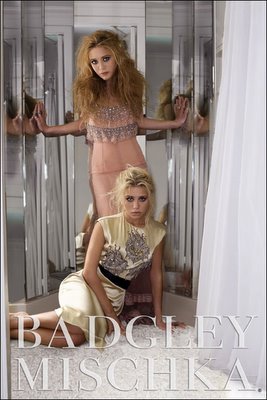 In a February 21st posting on Flypaper, Wendy posts about The New Boutique: Fashion And Design by Neil Bingham (May 2005), a book that precisely captures the intersection of fashion and culture. Bingham, an architectural and cultural critic, delivers photographs of retail spaces that present merchandise, but also takes into account the cultural forces that produce clothing and other items. Wendy's post got us thinking about the ways in which design influences several aspects of our lives.
In a February 21st posting on Flypaper, Wendy posts about The New Boutique: Fashion And Design by Neil Bingham (May 2005), a book that precisely captures the intersection of fashion and culture. Bingham, an architectural and cultural critic, delivers photographs of retail spaces that present merchandise, but also takes into account the cultural forces that produce clothing and other items. Wendy's post got us thinking about the ways in which design influences several aspects of our lives."The atmosphere within a retail space tells a story, it can draw us in, make us stay, and keep coming back for more. It can speak to, or be a reflection of, the cultural environment, neighborhood where it resides, and the type of clientele it is looking to attract," explains Cheryl Spigler, an interior designer in Boston. This makes one question what the purpose of retail space actually is, and how it changes depending on the culture in which it resides; obviously in many of North America's chain stores, the issue of the space is merely a question of how much merchandise can be attractively packed into a certain amount of square footage, but some upscale boutiques (although not exclusively) are pushing the limits of retail space and making it serve the community--an interesting idea. Increasingly, however, retailers are realizing the importance of creating stores that are more than just racks of clothing or other merchandise neatly arranged.
Spigler seems to agree with this populist approach to design. "Good design is for everyone," she states. It is definitely for everyone, and now it appears it is by everyone, as well. Given the rise in interactive design elements, Spigler notes, it is becoming increasingly possible for shoppers to customize their shopping experience based on several factors, including Spigler states, "neighborhood, income level, ethnicity, or education." In this way, retail spaces become multifunctional--they reflect not only the shoppers desires, but also aspects of themselves.
Perhaps the best example of multifunctional retail space that we've seen recently in person is Dutch architect Rem Koolhaas' design for the Prada store in SoHo in New York City. At the boutique, dresses and shoes stand next to a ready made theatre space. Of his work, Koolhaas has said, "'Architects, for the first time in several decades, are being solicited for their power to physically articulate new visions...'". Being able to shop and view films, artwork, and other presentations in a retail space leaves ample room for turning the current reail business model upside down. Customers can demand more than the simple shop-then-purchase chain of events.
The co-opting of retail spaces by the shoppers who support them is an interesting phenomenon. If people can exert more control over the shopping experience--essentially customize and maintain it through technology and other means, the possibility of reshaping the entire consumer role is possible as well. Books such as Bingham's are a reminder that change is possible, that design is significant to human experience, and it can broaden our entire approach to influencing change in the social world.




